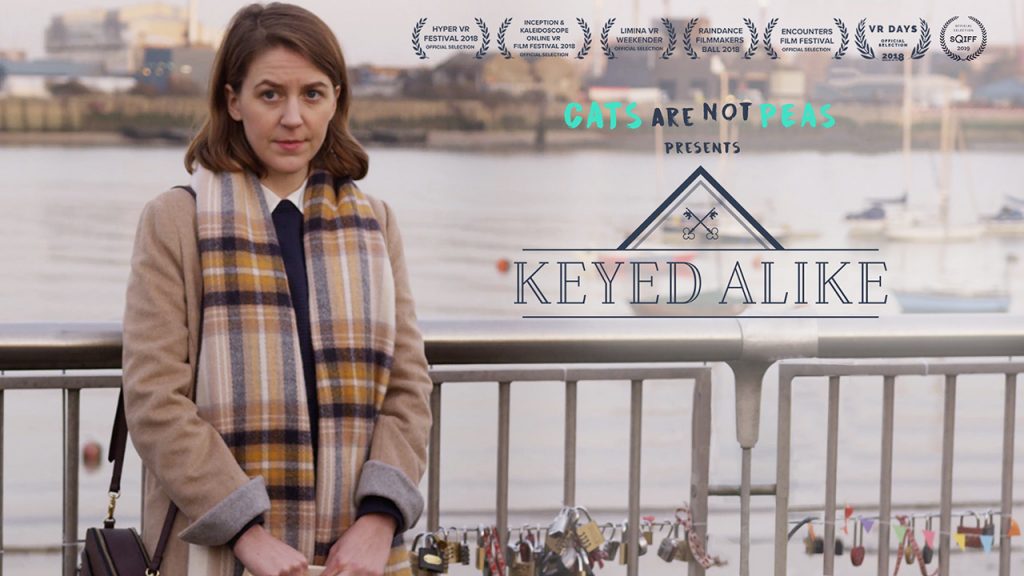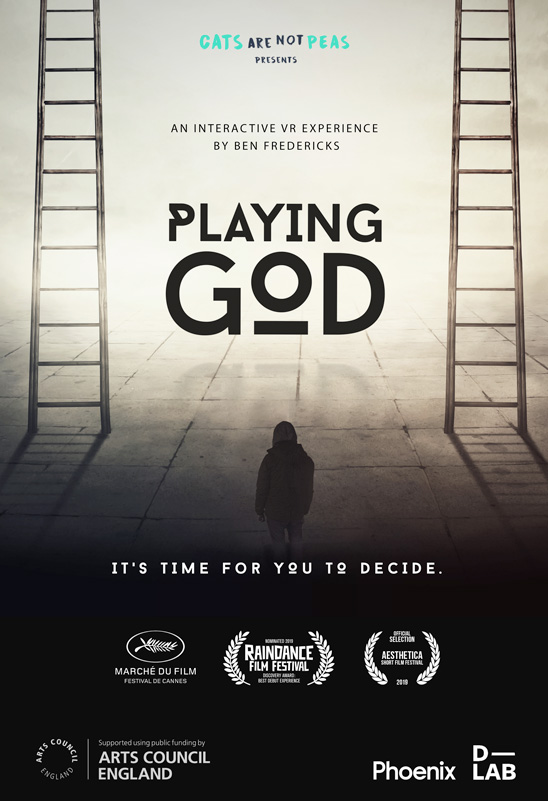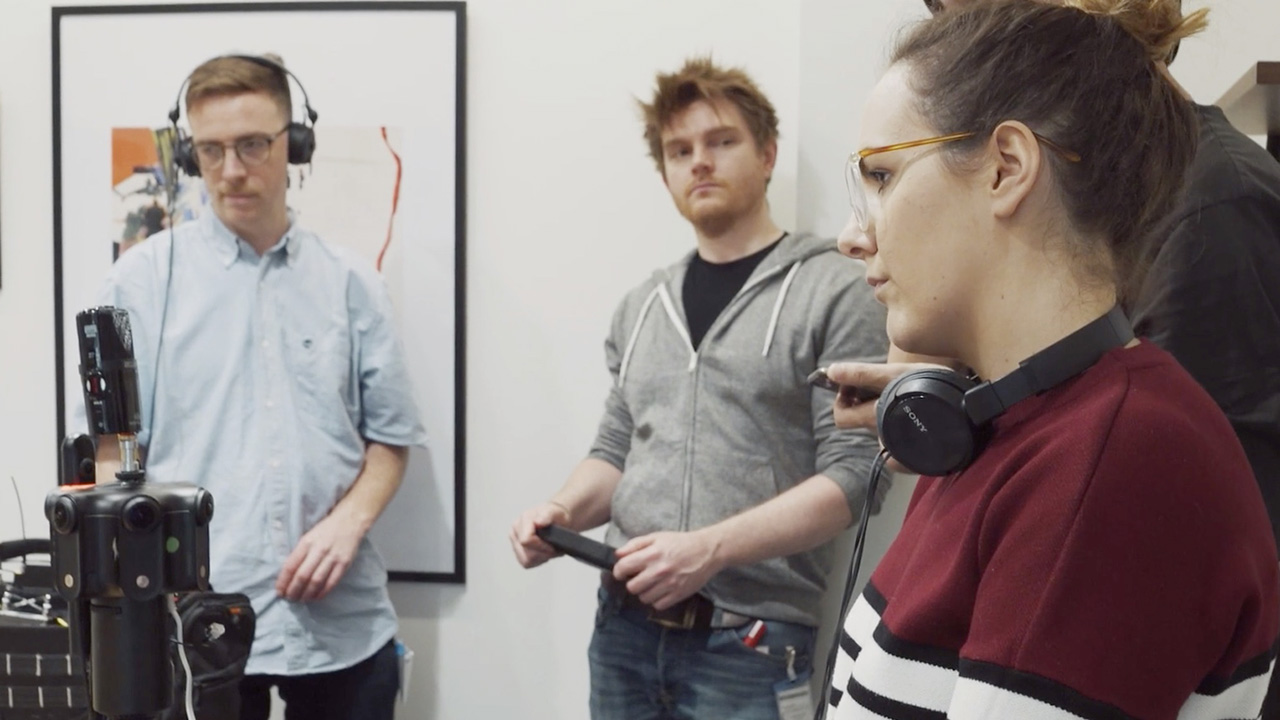She produces and directs her own VR films, has done a TEDx talk on using VR for good and decided to launch her own podcast during a worldwide pandemic. We decided to sit with Alex Rühl and discuss her XR vision for the immersive and creative industry.
Going after the storytelling part of it
Alex Rühl – I started my career in the television industry. It was fun but everything felt very established with a lot of hierarchy. So I decided to look for something different, something with a more independent, creative and spontaneous vibe. And virtual reality was this new undiscovered land where everything was an experiment! No one knew what they were doing which was really exciting to me. Everyone got together either online or at fringe meet ups to share what they were making and it had that exciting sense of collaboration and community about it. It felt like true innovation happening, especially within storytelling, which is what I’m particularly interested in.
A. R. – I think I just just got obsessed with it from there. I watched everything that was available at that time (on the Gear VR…) and I realised quite quickly that there was this huge gap between the “utility based VR apps” and the storytelling we could develop with it. Of course gaming was already the main discussion with the Oculus Rift about to be launched but only a very small number of people were looking at how to bring filmmaking and linear narratives into VR.
A. R. – At first I just experimented and made stuff by myself mostly – just a little 360 camera, an AVP licence and Adobe Premiere to stitch and edit my films. I was fascinated by the idea of changing perspectives – in fact one of my first VR films was about being a hamster trapped in a cage! Fight scenes, timelapses, spoken word performances, capturing performances… I tried a bit of everything and soon became very well-versed with what did and didn’t work when you put 360 into a headset.
On the genesis of KEYED ALIKE
A. R. – In 2016 I wrote a script which was originally meant to be a traditional short film or something. But after speaking with BAFTA nominated director Chloë Thomas about the project, she asked me why I didn’t want to shoot it in VR. Light bulb moment! I went back to writing, to see how I could change the perspective and story to be more suitable for headsets. It started off as a really small project – a proper rogue DIY affair – but then Chloë sent the script to the fabulous Gemma Whelan (Game of Thrones, Killing Eve, End of the F**king World) and next thing I knew we were making this crazy little one-shot VR romcom on the river bank of the Thames in London.

A. R. – It ended up being this lovely little piece where the audience thinks they are merely an observer until the end when it’s hinted at who they might have been the whole time. For me, making this particular story in VR was like how can we create that sense of exposure to mirror what the characters are feeling? How can we create that sense of actually being there, on the riverbank? Also how do we create that sense of intimacy between, not only the characters, but between the audience and the characters? None of that traditional cinematic language works in 360 so the question was how do we create the equivalent of a wide shot, a close-up etc?
LBE and 360 contents working together (not?)
A. R. – I think we’re starting to see a bit of a splinter in the non-gaming entertainment VR ecosystem. The more exposure creators have to VR, the more they are interested in pushing the boundaries of the tech e.g. mocap, interactivity, room-scale, live-performance etc. This isn’t a bad thing at all – it’s wonderful to see such amazing content being made. But it poses a real challenge as this kind of content isn’t always suitable for first-time users and it definitely isn’t as scalable as something like 360 content where you can facilitate a group showing with cheaper hardware and less space/staff requirements. I think back to when I first discovered VR and something like a very simple 360 experience by Felix and Paul was incredibly powerful and moving enough to blow my mind. We all need to remember that – what it was like the first time we tried VR because there’s still so many people that have never worn the headset before.

A. R. – So yeah, I think we need more creators making content for mass audiences. But it’s a weird time right now because location-based exhibitions are only just getting back on their feet and the at-home ecosystem is thriving but mainly for social VR and more game-based content. But going into 2022 I’m very excited to see a renewed sense of creativity amongst the storytellers in this medium which will lead to more opportunities to showcase this kind of work.
A. R. – For me, the future of VR storytelling is about being fully immersed in a new world. I want to be in the story – think Dungeons and Dragons. I’m also not naive to the limitations of the tech right now and I think as the hardware gets better and the audiences start to come into the ecosystem we will see more budget flow towards experimenting with content again. For now every single piece of VR I do is about exploring how to get audiences to see with new eyes. Keyed Alike, Playing God, Bad News are all projects that aim to make use of VR’s unique power of putting audiences into challenging and thought-provoking situations which hopefully have a lasting impact.
An immersive podcast: Alex Makes VR
A. R. – When COVID hit, a lot of my work went on pause, and being the total workaholic I am, I thought of ways I could flex that creative muscle and also stay in touch with what was happening in the VR community so I started a podcast…

A. R. – Like most people, the pandemic really gave me time to think about what’s important in life and one of the things I realised is that I want to help people get into this industry and know they aren’t alone with all the challenges thrown their way. I’ve been working for myself since 2012 and running a VR business since 2016 but most people don’t have a clue how to even land their first client or build a career that allows them to travel the world or have ownership of their own time. So I started putting out episodes about getting started in business and some of the lessons I’ve learned along the way. Then I started to tackle more specific questions from listenners like ‘how to facilitate a VR demo’ or ‘how to distribute your VR piece’ or ‘how to direct a volumetric shoot’ etc. And I’ve been putting out episodes weekly ever since! It’s reached over 25,000 people in over 70 countries in the last and off the back of it I’ve heard from people that didn’t know anything about VR who are now making their full time income off of it. It’s really exciting and rewarding! The sharing and collaborative nature of the VR community was what drew me to it in the first place so I’m very humbled to continue that legacy with the podcast.



Leave a Reply
You must be logged in to post a comment.